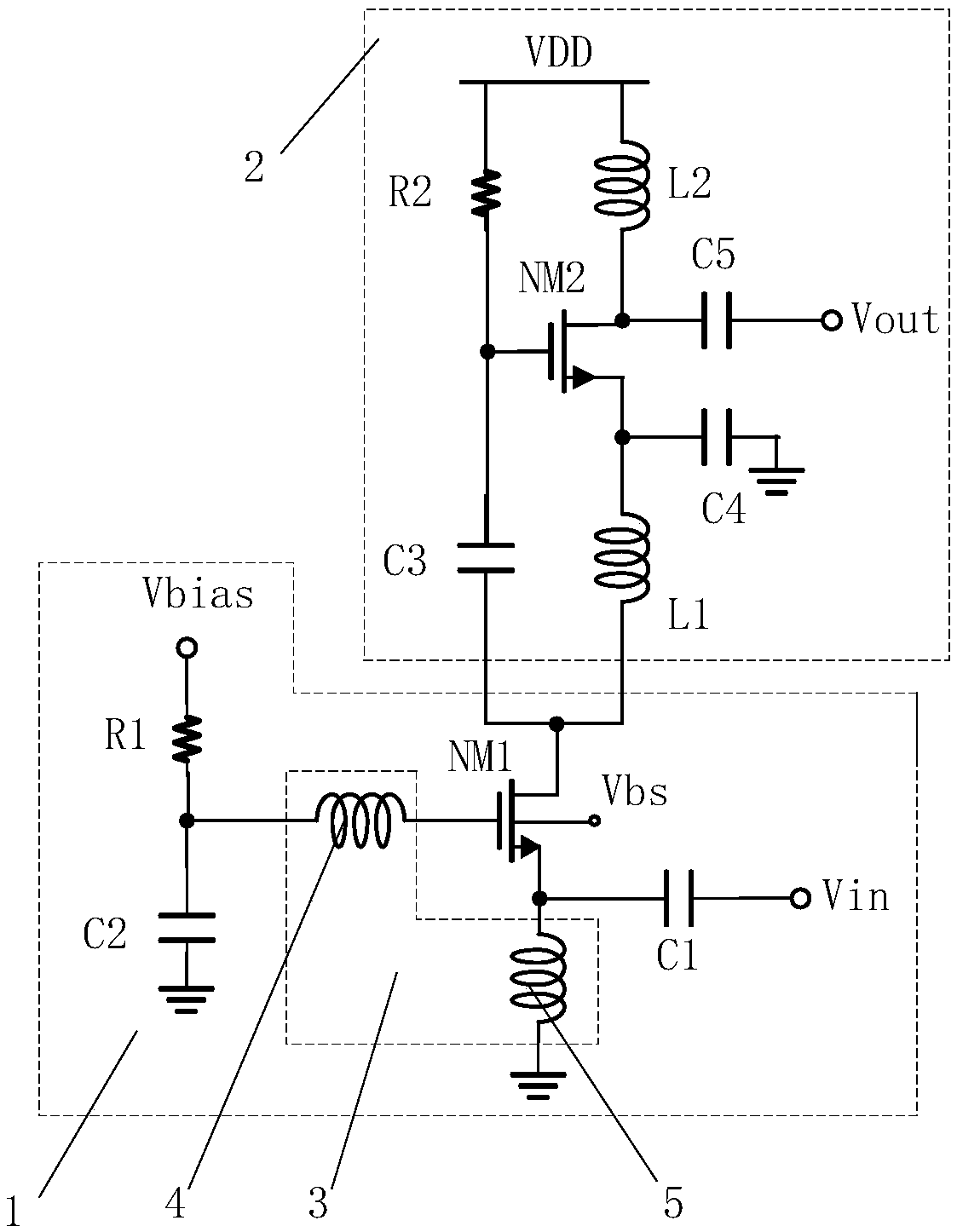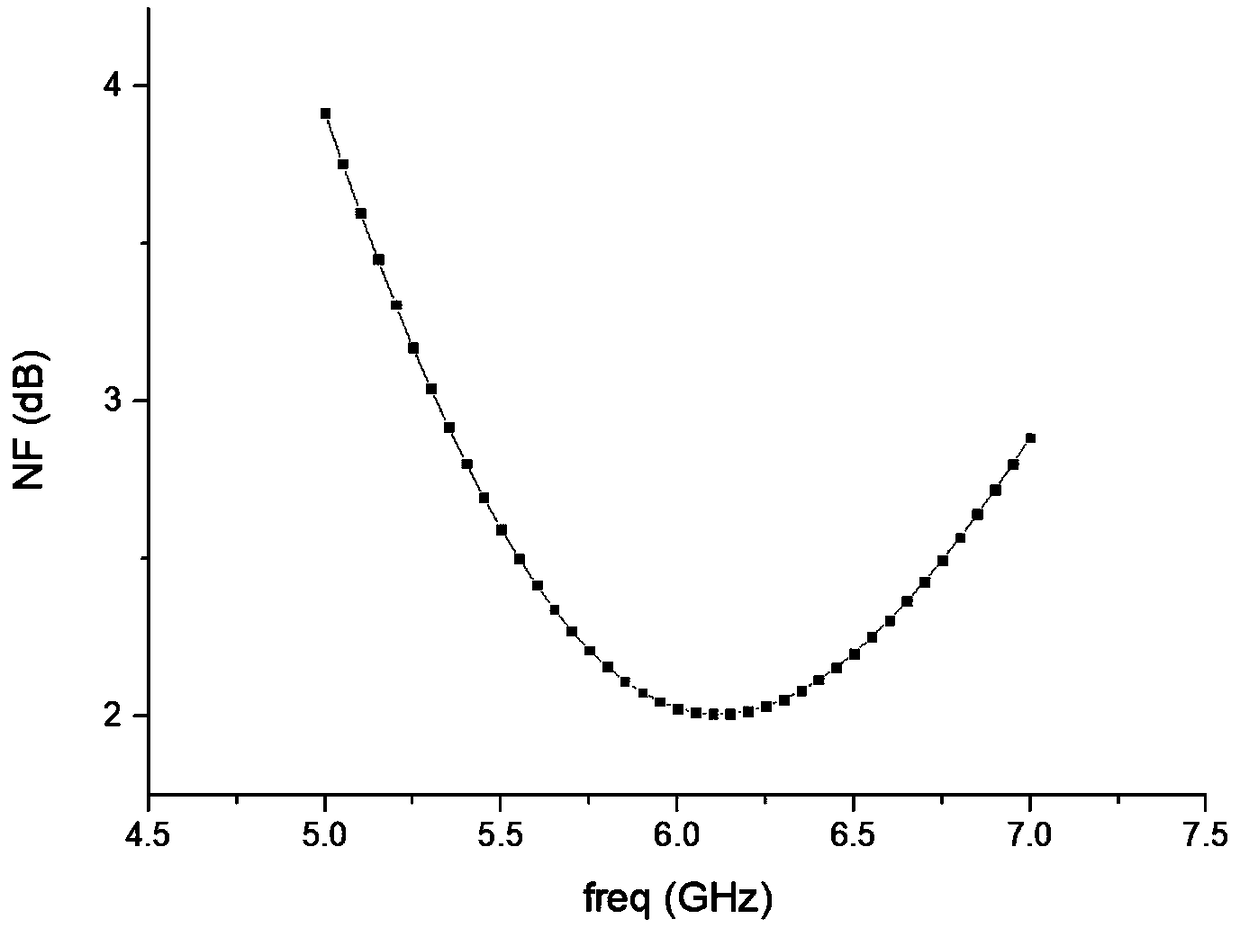Ultralow consumption current-reuse low-noise amplifier based on substrate bias
A low-noise amplifier and current multiplexing technology, applied in amplifiers, high-frequency amplifiers, radio frequency amplifiers, etc., can solve the problems of high noise coefficient and low-noise amplifier power consumption, achieve low noise, reduce circuit power consumption, and achieve The effect of current multiplexing
- Summary
- Abstract
- Description
- Claims
- Application Information
AI Technical Summary
Problems solved by technology
Method used
Image
Examples
Embodiment 1
[0034] Such as figure 1 As shown, the present invention is an ultra-low current multiplexing low noise amplifier based on substrate bias, including an input circuit 1 and an output circuit 2 connected in sequence; the input circuit includes a first resistor R1, a first capacitor C1 , the first MOS tube NM1 and the transformer 3; the transformer 3 includes a first coil 4 and a second coil 5 of mutual inductance; one end of the R1 and one end of the first coil 4 have a common node, and the other end of the R1 is biased Voltage Vbias, the other end of the first coil 4 is connected to the gate of NM1; one end of C1, the source of NM1, and one end of the second coil 5 have a common node, and the other end of C1 is connected to the input voltage Vin, the second coil 5 The other end of NM1 is connected to the ground, the drain of NM1 is connected to the output circuit 2; the substrate of NM1 is connected to the substrate bias voltage Vbs.
[0035] When this embodiment is implemented...
Embodiment 2
[0037] Such as figure 1As shown, this embodiment is based on Embodiment 1, and the input circuit 1 further includes a second capacitor C2; one end of the C2 is connected to the common node of R1 and the first coil 4, and the other end of C2 is grounded.
[0038] When this embodiment is implemented, the second capacitor C2 is grounded, thereby forming an AC ground, realizing filtering of the entire device, and reducing noise.
Embodiment 3
[0040] Such as figure 1 As shown, this embodiment is based on Embodiment 1, and the output circuit 2 includes a second resistor R2, a second MOS transistor NM2, a third capacitor C3, a fifth capacitor C5, a first inductor L1, and a second inductor L2 ; One end of R2, one end of C3 and the gate of NM2 have a common node, and the other end of R2 is connected to the operating voltage VDD, and the other end of C3 is connected to the drain of NM1; one end of the L2, one end of C5 and NM2 The drains share a node, and the other end of L2 is connected to the working voltage VDD, and the other end of C5 is connected to the output voltage Vout; one end of the L1 and the source of the NM2 share a node, and the other end of L1 is connected to the drain of the NM1.
[0041] When this embodiment is implemented, VDD passes the bias voltage to NM2 through R2, and because one end of C3 and the gate of NM2 share a node, and C3 is connected to the drain of NM1, this current branch can be used as...
PUM
 Login to View More
Login to View More Abstract
Description
Claims
Application Information
 Login to View More
Login to View More - R&D
- Intellectual Property
- Life Sciences
- Materials
- Tech Scout
- Unparalleled Data Quality
- Higher Quality Content
- 60% Fewer Hallucinations
Browse by: Latest US Patents, China's latest patents, Technical Efficacy Thesaurus, Application Domain, Technology Topic, Popular Technical Reports.
© 2025 PatSnap. All rights reserved.Legal|Privacy policy|Modern Slavery Act Transparency Statement|Sitemap|About US| Contact US: help@patsnap.com



